2011 LinuxQuestions.org Members Choice
Awards
by Paul Arnote (parnote)
The formal 12th annual poll of Linux users on the LinuxQuestions.org forum started on December 28, 2011. Electrons swirled and whirled as users voted for their favorite applications in 31 different categories. Voting continued until February 5, 2012. As you might imagine, there were a few “surprises” in the voting results.
Only registered members could vote at the forum, and were limited to one vote per member per category. Members were not required to vote in every category. Rather, they could skip categories that they had no knowledge of, or that contained software that they didn’t use.
In case you’re not familiar with it, LinuxQuestions.org maintains a relatively distro-agnostic forum. There, a wide range of topics of interest to Linux users are discussed. Each of the “major” distros has their own sub-boards in the forum. There are also boards for new users, hardware, notebooks, desktops, networking, and several other boards that represent areas of interest for Linux users.
Here are the individual categories, along with the top five finishers in each category. The icon of the top vote recipient is shown above each category.
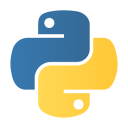
Programming Language Of The Year
Python took the top honors, obtaining nearly 30 percent of the overall votes in this category. Second place was swooped up by the C programming language, followed by C++, PHP and Perl.

Text Editor Of The Year
Vim ran away with the top honors this year, obtaining over 31 percent of the votes in this category. Gedit took second place with just over 15 percent of the votes, with Emacs, Kate and Nano filling out the rest of the top five spots, respectively.

Browser Of The Year
Firefox was the runaway favorite for browser of the year, garnering almost 57 percent of the votes. Chrome was a distant second place finisher, with nearly 18 percent of the votes. In order, Opera, Chromium and SeaMonkey rounded out the rest of the top five spots.
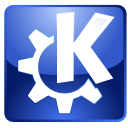
Desktop Environment Of The Year
KDE took the top mark as users’ favorite desktop environment, with a solid 33 percent of users selecting it as their favorite. Perhaps one of the biggest upsets this year is how Xfce has overtaken Gnome for the second place spot. Xfce was selected as the favorite desktop environment for nearly 28 percent of users. With the move from the more traditional desktop of Gnome 2.3x to Gnome Shell in the past year, Gnome fell to a distant third place finish, with only 19 percent of the votes. LXDE took fourth place, while the Unity desktop took a very distant fifth place.

Database Of The Year
MySQL was the runaway favorite database among Linux users, taking in 50 percent of the votes. PostgreSQL was the second place finisher, with 25 percent of the votes. SQLite, Firebird and MariaDB rounded out the top five finishers.

Messaging Application Of The Year
Pidgin was, by a large margin, Linux users’ favorite messaging application. It raked in over 53 percent of the final vote. Kopete took a distant second place, with just over eight percent of the vote. Irrsi took the third spot, closely followed by Xchat and Empathy. The latter two ended up in a tie for fourth place.
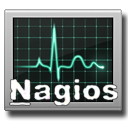
Network Monitoring Application Of The Year
Nagios ran away with the top spot in the category for network monitoring application of the year, with nearly 65 percent of the votes. Zabbix was a distant second place, followed by Idnga and Shinken tying for third place. Munin brought up the rear of the top five applications in this category.

Media Center Of The Year
XBMC edged out MythTV as Linux users’ favorite media center software, taking 48 percent of the final vote, compared to 33 percent of the vote for MythTV. Boxee and Google TV tied for a distant third place finish, while Elisa was a very distant fourth place finisher.

Graphics Application Of The Year
It should be no real surprise that Gimp repeated its string of top honors in this category, getting just over 72 percent of the final vote. Inkscape took second place, with just over 10 percent of the votes, with Blender taking third place with just under eight percent of the final tally. Scribus and ImageMagick, respectively, filled out the fourth and fifth place finish.
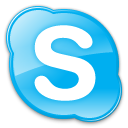
VoIP Application Of The Year
Skype was the “no-surprises-here” runaway favorite, obtaining nearly 60 percent of the final votes. Ekiga took a distant second place, getting just over 14 percent of the votes. Empathy and Mumble tied for third place, with just over four percent of the votes. Linphone and Twinkle tied for fourth place, with just under four percent of the votes.

Audio Media Player Application Of The Year
Amarok, while once again capturing the top spot, did so this year without the runaway victory that it had experienced in years past. It’s unclear if changes in Amarok over the past year are responsible, or if the other audio media players are getting that much better. Nonetheless, Amarok captured nearly 20 percent of the final votes. Audacious came in second place, with nearly 14 percent of the final votes. Rhythmbox posted a very close third place finish, while Clementine and Banshee were the fourth and fifth place finishers, respectively.

Window Manager Of The Year
Openbox narrowly beat out Compiz by only one vote as the favorite window manager, with both obtaining just under 16 percent of the votes. Fluxbox came in third place, with just under 14 percent of the votes. KWin and xfwm4 were the fourth and fifth place finishers.

Open Source Game Of The Year
Battle For Wesnoth took the top honors in the open source game category, with just under 19 percent of the votes. Open Arena grabbed just under 10 percent of the votes, to lock up a second place finish. SuperTuxKart, Frozen Bubble and OpenTTD rounded out the rest of the top five vote getters.

Open Source CMS/Blogging Platform Of The Year
WordPress won first place as a nearly 2:1 favorite over its closest rival, Drupal, capturing nearly 49 percent of the votes, compared to almost 25 percent of the votes captured by Drupal. Joomla! took in just under 14 percent of the votes to capture third place. Fourth place was taken by TYPO3, while Alfresco and XOOPS tied for a fifth place finish.

Backup Application Of The Year
Rsync grabbed a first place finish with just over 37 percent of the votes. AMANDA came in second place, with right at 15 percent of the votes. Tar, Clonezilla and luckyBackup rounded out the top five vote recipients.
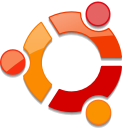
Desktop Distribution Of The Year
This category came down to the wire, with a head-to-head battle for first place between Ubuntu and Slackware. Ubuntu edged out Slackware for the top spot by just two votes. Debian came in third place, while Linux Mint and Arch came in fourth and fifth. PCLinuxOS finished in eigth place, just behind Fedora and openSuse, and just ahead of CruchBang and Bodhi.

File Manager Of The Year
Just as with the desktop distribution of the year category, this contest came down to a heated, down to the wire contest between Dolphin and Nautilus, with the former edging out the latter by only one vote. Thunar posted a solid third place win, while Midnight Commander came in fourth. PCManFM was the fifth place finisher.

Server Distribution Of The Year
Debian and Slackware battled it out for the top spot, with Debian narrowly beating Slackware by only nine votes. CentOS came in third place, while Red Hat Enterprise Linux came in fourth. Ubuntu LTS won the fifth place slot.

IDE/Web Development Editor Of The Year
Eclipse captured 22 percent of the vote in this category, making it the first place finisher for applications in this category. Geany, the multi-talented IDE and text editor, took second place honors in the IDE/Web development editor category, with almost 15 percent of the vote. Third place went to Bluefish, while fourth and fifth place went to Emacs and Netbeans, respectively.
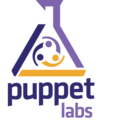
Configuration Management Tool Of The Year
Puppet brought home the first place trophy for configuration management tool, with nearly 55 percent of the vote. Second place went to Cfengine, with almost 14 percent of the vote. Third place went to Spacewalk with a little over 12 percent of the vote. Chef and Salt Stack brought up the last of the top five places, with a fourth and fifth place finish.

Video Media Player Application Of The Year
VLC swept up more than twice the number of votes of its closest competitor, Mplayer, to capture 61 percent of the votes, compared to only 30 percent of the votes for Mplayer. Third place went to Totem, with just over three percent of the vote. Fourth place resulted in a tie between Xine and Dragon Player.

Mobile Distribution Of The Year
It’s probably no surprise to anyone with a pulse that this year’s mobile distribution of the year is Android, capturing nearly 70 percent of the votes. Second place went to CyanogenMod, which curiously enough, is also related to installing and upgrading new versions of Android on Android devices, with just over 14 percent of the votes. Meego captured third place, with just under six percent of the votes. Curiously, Maemo is listed in fourth place, despite Maemo having been rolled into the Meego project. WebOS was the fifth place finisher.
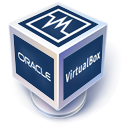
Virtualization Product Of The Year
VirtualBox coasted to an easy first place finish, getting over 61 percent of the vote. Second place went to VMware, with just under 15 percent of the vote. KVM, the KDE virtual machine manager, came in third, with just under 14 percent of the vote. Qemu was in fourth place, with Xen coming in fifth place.
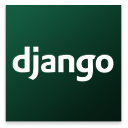
Open Source Web Framework Of The Year
Django edged out Ruby on Rails for the first place finish, with just over 32 percent of the vote, compared to almost 29% of the vote for Ruby on Rails. Zend Framework captured third place with almost nine percent of the vote. CodeIgniter came in fourth place, while CakePHP, Spring and Yii all tied for a fifth place finish.
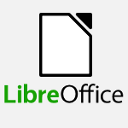
Office Suite Of The Year
Less than one year after its debut, LibreOffice has captured the top spot among office suites, capturing over 81 percent of the votes. OpenOffice, the former front runner in this category, took a distant second place with just over 14 percent of the votes. GNOME Office captured third place, with KOffice and Lotus Symphony bringing up the rear.

Audio Authoring Application Of The Year
Audacity repeated its reign at the top of the heap, capturing another first place finish this year with nearly 78 percent of the votes. Ardour came in a distant second place, with less than eight percent of the votes. LAME took third place with seven percent of the vote, with Rosegarden and LMMS taking fourth and fifth places, respectively.
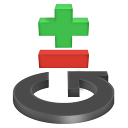
Revision Control System Of The Year
Git captured more than twice as many votes as its closest competitor, Subversion, with nearly 59 percent of the votes, versus just under 25 percent of the vote for Subversion. Mercurial took a solid third place finish, while CVS and Bazaar rounded out the top five spots.
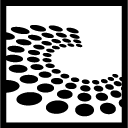

NoSQL Database Of The Year
Cassandra and MongoDB tied for a first place finish, both capturing just over 26 percent of the votes. CouchDB was a close second place finisher, with almost 23 percent of the votes. HBase and Redis took third and fourth places.

Video Authoring Application Of The Year
FFmpeg ran away with the votes in this category, capturing just over 34 percent of the vote for a first place finish. Kdenlive captured second place with, getting just over 15 percent of the vote. Close on its heels was Avidemux, capturing just under 15 percent of the vote. Openshot and Blender brought up the rear for the top five spots.

Host Security Application Of The Year
SELinux captured four times as many votes as its runner-up, capturing 51 percent of the votes to capture first place. Rootkit Hunter came in second, with under 13 percent of the vote. AppArmor took third place with just over eight percent of the vote. Samhain and Tripwire tied for fourth place, each with just under seven percent of the vote.
Summary
There you have it: the top Linux applications in 31 separate categories, picked by Linux users themselves. If you want to participate in next year’s poll, be sure to log in at the LinuxQuestions.org forum next January.

